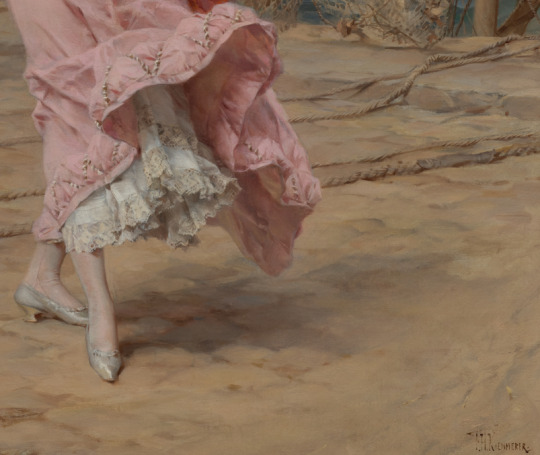#ventôse
Text
Duodi 22 Ventôse an CCXXXII
(lundi 11 mars 2024 / Monday March 11th, 2024)


Pendant la Révolution française, l'objectif était de créer une nouvelle société basée sur les idéaux de liberté, d'égalité et de fraternité. Le calendrier républicain était une manifestation de cette volonté de rupture avec l'ancien régime. Chaque jour de ce calendrier était dédié à une plante, un animal ou un outil, symbolisant ainsi les valeurs républicaines et l'importance de la nature dans la vie quotidienne.
Le mois de Ventôse dans le calendrier républicain français, correspondant généralement à la période entre le 20 février et le 20 mars, symbolisait le début de la transition vers le printemps. Associé au vent, ce mois était marqué par les premiers signes de renouveau et d'activités agricoles, préparant le terrain pour la saison à venir.
Le 22 Ventôse dans le calendrier républicain est appelé "journée du persil".
Cette journée était dédiée à la mise en avant du persil, une plante herbacée largement utilisée en cuisine pour sa saveur aromatique et ses propriétés médicinales. Pour comprendre l'importance de cette journée, il est nécessaire de connaître le contexte historique et culturel de l'époque.
Le persil, choisi pour être célébré le 22 Ventôse, était considéré comme une plante humble mais essentielle. Utilisé depuis l'Antiquité pour ses vertus médicinales et culinaires, le persil incarnait la simplicité et la vitalité. Sa présence dans de nombreux plats de la cuisine française en faisait un ingrédient familier pour le peuple.
La journée du persil était l'occasion de mettre en lumière l'importance des plantes aromatiques dans l'alimentation et la santé. Les républicains encourageaient la culture du persil dans les jardins potagers pour assurer une alimentation saine et diversifiée pour tous.
La journée du persil nous rappelle l'importance de valoriser les ressources naturelles et de promouvoir une alimentation équilibrée. Elle nous invite également à nous souvenir des idéaux de la Révolution française et de l'aspiration à une société plus juste et solidaire.
***
During the French Revolution, the objective was to create a new society based on the ideals of liberty, equality, and fraternity. The Republican calendar was a manifestation of this desire to break away from the old regime. Each day of this calendar was dedicated to a plant, an animal, or a tool, symbolizing republican values and the importance of nature in daily life.
The month of Ventôse in the French Republican calendar, generally corresponding to the period between February 20th and March 20th, symbolized the beginning of the transition to spring. Associated with the wind, this month was marked by the first signs of renewal and agricultural activities, preparing the ground for the upcoming season.
In the Republican calendar, the 22nd day of Ventôse is called "day of parsley".
This day was dedicated to highlighting parsley, an herb widely used in cooking for its aromatic flavor and medicinal properties. To understand the importance of this day, it is necessary to know the historical and cultural context of the time.
Parsley, chosen to be celebrated on the 22nd day of Ventôse, was considered a humble yet essential plant. Used since antiquity for its medicinal and culinary virtues, parsley embodied simplicity and vitality. Its presence in many French dishes made it a familiar ingredient for the people.
The parsley day was an opportunity to highlight the importance of aromatic plants in food and health. Republicans encouraged the cultivation of parsley in kitchen gardens to ensure healthy and diverse nutrition for all.
The parsley day reminds us of the importance of valuing natural resources and promoting a balanced diet. It also invites us to remember the ideals of the French Revolution and the aspiration for a fairer and more fraternal society.
#calendrier#calendrier républicain#calendrier républicain français#calendrier révolutionnaire#calendrier révolutionnaire français#france#français#révolution#ventôse#plante#french calendar#french#french revolution#french republic
14 notes
·
View notes
Text
11 Ventôse an 232 (1er mars 2024)

🇨🇵 Le 11 Ventôse, dans le calendrier républicain français, correspond généralement au 1er mars dans le calendrier grégorien. Cette journée est connue comme la
"journée de la herse".
La herse est un outil agricole utilisé pour briser les mottes de terre et niveler le sol après le labour, préparant ainsi le terrain pour la plantation des semences. Le 11 Ventôse était donc dédié à cette étape cruciale du processus agricole.
Après le travail de la bêche, qui consiste à retourner la terre, vient l'étape de la herse pour affiner la surface du sol, améliorer sa structure et favoriser une meilleure répartition des éléments nutritifs. Cela permet également de faciliter la germination des graines et la croissance des plantes.
Ainsi, le 11 Ventôse représentait une journée où les agriculteurs se concentraient sur la préparation minutieuse des champs en vue des futures récoltes. C'était une étape essentielle dans le cycle agricole, soulignant l'importance du travail du sol pour assurer le succès des cultures et la sécurité alimentaire de la communauté.
***
🇬🇧/🇺🇲 On the French Republican calendar, the 11th Ventôse generally corresponds to the 1st of March in the Gregorian calendar. This day is known as the "day of the harrow".
The harrow is an agricultural tool used to break up clods of soil and level the ground after plowing, thus preparing the soil for seed planting. The 11th Ventôse was dedicated to this crucial step in the agricultural process.
After the work of the spade, which involves turning over the soil, comes the harrowing stage to refine the surface of the soil, improve its structure, and promote a better distribution of nutrients. This also helps facilitate seed germination and plant growth.
Thus, the 11th Ventôse represented a day when farmers focused on meticulously preparing the fields for future harvests. It was an essential step in the agricultural cycle, highlighting the importance of soil work in ensuring the success of crops and the food security of the community.
#france#revolution#recolutionnaire#calendrier#République#républicain#grégorien#calendrier républicain#french republican calendar#calendrier républicain français#1er mars#march 1st#Ventôse#11Ventôse
6 notes
·
View notes
Text
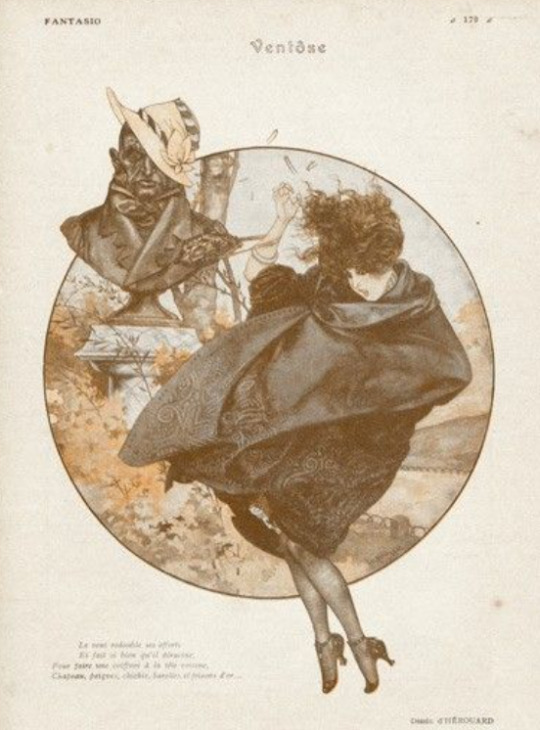
Ventôse, 1920 - Chéri Hérouard
1 note
·
View note
Note
La pauvre Tatiana Ventôse est entrain de se prendre une douche par la gauche matrixée. On dirait limite qu'elle a conduit leurs parents à Auschwitz.
Je pense qu'ils font une réaction épidermique au faut que ses arguments se tiennent. On pourrait répliquer sur le terrain des idées mais ça demanderait du temps, de l'énergie, de la culture historique, philosophique et politique, et un sérieux examen de conscience. Or, la plupart des militants et sympathisants de gauche ces derniers temps sont des ressortissants de la gauche-caviar et ils fonctionnent à la croyance plus qu'à la pensée. Ils ont leur credo et ça leur suffit.
J'aime mieux la dernière vidéo de Tatiana, qui est plus élaborée, plus soutenue que la précédente, et donne meilleure matière à la critique — en ce sens qu'il va falloir charbonner pour la démonter intégralement. Ce qui me fascine sans doute le plus chez la rouquine du Nord, c'est cette manie qu'elle a de ressusciter la Gauche à l'ancienne, travailliste, patriote et populaire, et qui passe aussitôt aux yeux du gauchiste moyen (j'emprunte le terme à Lénine, ça date d'un siècle avant la dernière campagne vraiment socialiste de Mélenchon) pour un discours d'extrême-droite.
C'est rigolo, quand même. Les pillards font chaque nuit la démonstration de leur inféodation volontaire au capitalisme le plus décérébré ; ils vandalisent des équipements publics et des écoles ; ils appellent au meurtre des blancs, des juifs, des homosexuels, des policiers ; ils le font généralement au nom d'une religion qui cause des ravages dans la majeure partie du monde à l'heure actuelle ; et pourtant, curieusement, la Gauche presque tout entière prend leur défense, toute prête d'ailleurs à reprendre son discours de complaisance pour réclamer que le contribuable expie une faute originelle imaginaire en payant pour restaurer le mobilier dégradé, en professant sa compassion pour les racailles qui l'accablent...
Je suis en train de me disputer dans la section commentaires de mon dernier billet avec des gens certes charmants mais que j'estime redoutablement à côté de la plaque en termes d'analyse sociopolitique de la situation française, parce qu'ils croient notamment que les Français se seraient détournés de la Gauche véritable ; or, c'est une inversion des valeurs absolument tragique quand on considère le mode de vie des uns et des autres face aux discours gauchistes.
Je vais faire pire que donner raison à Tatiana Jarzabek, je vais donner raison à François Asselineau ! Lequel s'enquérait récemment de savoir pourquoi personne à l'Assemblée n'avait fait ne serait-ce qu'évoquer l'article 68 de notre Constitution prévoyant la destitution du Président de la République en cas de manquement à ses devoirs ? Certes, il y avait peu de chance que cela se fît mais les « Insoumis » ont déjà déposé suffisamment de motions de censure stériles pour craindre réellement l'échec législatif...
#tous les bons éléments du front de gauche ont été évincés et remplacés par des petits jeunes aux dents longues pétris de postmodernisme#tu m'étonnes que la gauche ne fasse plus recette#à la limite on en trouve encore assez de traces chez ruffin#mais ruffin président les gens savent fort bien qu'il se constituerait un gouvernement à gauche et l'on reviendrait à la case départ#de toute façon les gens sont épuisés et appauvris#ils n'ont pas envie de payer les pots cassés qui d'ailleurs sont cassés très littéralement là#et la gogôche ne fait qu'empiler les humiliations et les insultes#les gens veulent que la tragédie en cours cesse et ils n'écouteront qu'un discours ferme et sans concession pour les hooligans#tatiana ventôse#n'a pas un discours de droite mais un discours républicain#ce qui n'est pas synonyme de démocratique#mais nous ne sommes pas à un moment où il faudrait faire de grands discours misérabilistes sur les pauvres jeunes de banlieue#qui ne peuvent jamais dealer tranquilles et braquer des vieilles sans qu'un flic fasse du délit de faciès#nous nous sommes plus là#là nous récoltons les fruits de quarante années d'incurie des pouvoirs publics#donc la réponse appropriée n'est sans doute pas de rester les bras ballants#en pleurant sur le sort d'émeutiers qui risquent le profilage racial quand ils gueulent qu'il faut casser du “pd” au nom du coran
16 notes
·
View notes
Text
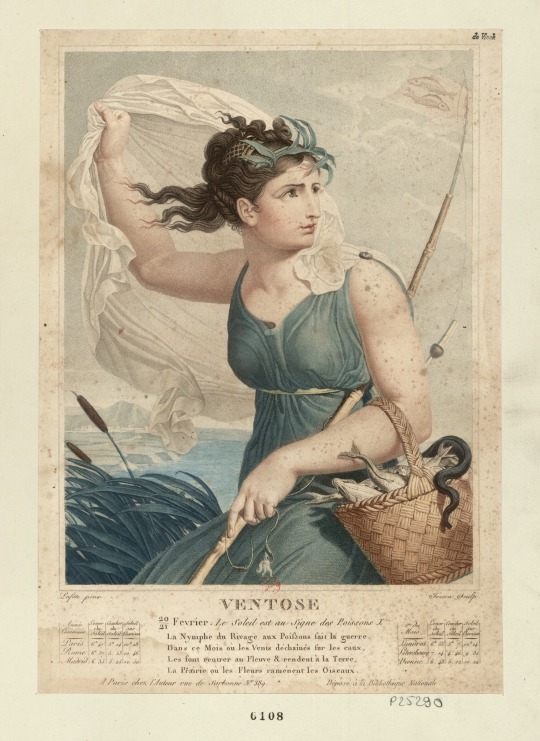
#french republican calendar#french revolution#my favorite of these#maybe I can work ventôse into a username…
21 notes
·
View notes
Text
the sword of yajiu
by Bai Juyi (mid-to-late Tang Dynasty poet, 8th and 9th Century)
歐冶子死千年后 A thousand years since Ou-ye Zi had died,
精靈暗授張鴉九 His soul, in gloom, for Zhang Yajiu did guide.
鴉九鑄劍吳山中 And Yajiu forged a Sword among Wu hills,
天與日時神借功 From Heaven borrowed time, from gods their skills.
金鐵騰精火翻焰 Flames fluttered, ores’ and irons’ spirits soared
踴躍求為鏌琊劍 A Moye Sword they leapt up and restored.
劍成未試十餘年 The Sword spent ten years idle, and then some,
有客持金買一觀 Before a Guest paid sums to have a look.
誰知閉匣長思用 The case, alas, stayed closed in want of use;
三尺青蛇不肯蟠 The three-feet green snake dared not leave its nook.
客有心 劍無口 The Guest had a spark, the Sword bore no mark,
客代劍言告鴉九 The Guest spoke Sword’s words, plead that Yajiu hark:
君勿矜我玉可切 “Boast not, sir, stones of jade that I can slice;
君勿誇我鐘可刜 Gloat not, sir, heavy bells that I can maul;
不如持我決浮雲 Do better, hold me, cleave the clouds adrift,
無令漫漫蔽白日 Their boundless blinds from bright of sun dispel.
為君使
無私之光及萬物 Your selfless glow shall I expand to all
蟄蟲昭蘇萌草出 Those hibernating wake, and sprouts propel.”
Ou-ye Zi was a swordsmith in the state of Yue in the Spring and Autumn period. The Yue-jue Shu (available only in Chinese, sorry) said that when Ou-ye Zi worked, the Mount Chijin pried itself apart, and tin arose within, and the brook of Ruoye stopped in its flow, and copper arose within; and Master of Rain poured water to clean any dirt, and the Lord of Thunder blew the winds and raised the fires; and aquatic dragons held up the furnace, and the Lord of the Heaven filled it with burning coal; the Laws of Tai-yi descended unto earth, and all essence of the world were bestowed unto the sword.
Moye, his daughter, was also a swordsmith, and she and her husband Ganjiang made swords on the orders of He Lü, the king of Wu, and the swords bore the names of this couple. All three swordsmiths names later became references to great swords that required great wielders.
Several stories existed to explain what happened to this couple and their child later on. These were retold in the 20th century story "Forging the Swords" by Lu Xun, the English translation of which can be read in pages 43 through 53 here.
If Zhang Yajiu actually existed, he might have been a contemporary of Bai Juyi’s. Not much about this swordsmith is known.
Green snakes were often a metaphor for swords. The Emperor Gao of Han was said to have slayed a white serpent as he rebelled against the Qin dynasty, and Bai Juyi described the action as “beheading the white snake using the green.”
Among the Miscellaneous Chapters of the Book of Zhuangzi, the sword befitting a Son of Heaven was said to be able to cleave the floating clouds above and penetrate every division of the earth below, and
Let this sword be once used, and the princes are all reformed, and the whole kingdom submits.
Bai Juyi, along with his friend and fellow poet, Yuan Zhen, wrote a series of poems in the more ancient Yuefu style, whose explicit goals were to provide, in cryptic words, social commentary and sympathy for people from all walks of life.
Bai wrote 50 poems to this purpose; The Sword of Yajiu was the penultimate. In the preface to all 50 poems, Bai stated the thoughts that drove each piece, and the one for the The Sword of Yajiu was "to think of breaking through blockage and gloom".
#alsip.txt#poetry#this translation was not planned but#i read about the ventôse decrees and cried throughout germinal for it and am reminded of this poem in the process#every road leads back to frev and i cannot walk away#ok ok i'll deliver on adp as soon as i can
4 notes
·
View notes
Text
Since apparenty some of you guys asked me to post the feet fragment, how could i refuse and disappoint you? The scene takes place during Camille's conversation with Robespierre after the later called him to his place to discuss the dantonist mess together and save him. As you can guess, politics quickly turned more emotional and private.
Camille knew he was on his knees, it was so much more comfortable for him. But it was not enough. He bowed his head. He rubbed his cheek against the smooth silk of the other's stockings. As he was bent in half, he pressed his head against the insyep above the other man's shoes, between both his feet; he felt their shape with his face, stroked them from heels to quivering fingers. Nobody disturbed him. The darkness was absolute.
We get to see the scene in actual narrative (above) and then from Camille's pov as he remembers it.
[...] His face rested on his master's feet. It was an indescribably blissful position for him. And what could have happened, what was he thinking about? For a long time, about nothing. Then, about how he found these legs, and how it was enough for him. And then ...Ah, after that he noticed (he had to) that they were unnaturally hot. Finally the feet suprised him at the height of their instep. He covered his entire foot with his hand, he found it. He was delighted by an invisible but tactile shape, the proportions. And he thought involuntarily: what a perfect foot. Even for women such a beautiful one is rare. And then, with pleasure, in admiration for the perfect work of nature, he kissed the back of his leg. He had it right under his lips, it happened almost without him realising it. But was there anything wrong with that?
So that's prettt much it. Take what you asked for.
#lmao this was even more cursed in the original#last nights of ventôse#camille desmoulins#robespierre
58 notes
·
View notes
Text
What is this, Tumblr?



You tryna tell me something? 🤨
This is what I get for knowing about Last Nights of Ventôse...
#frev#also stumbled upon ‘saintmoulinspierre’ bout a few days ago#and this happened when i scrolled down through tumblr#last nights of ventôse#saintmoulinspierre#bisexual#maximilien robespierre#louis antoine de saint just#camille desmoulins
15 notes
·
View notes
Text

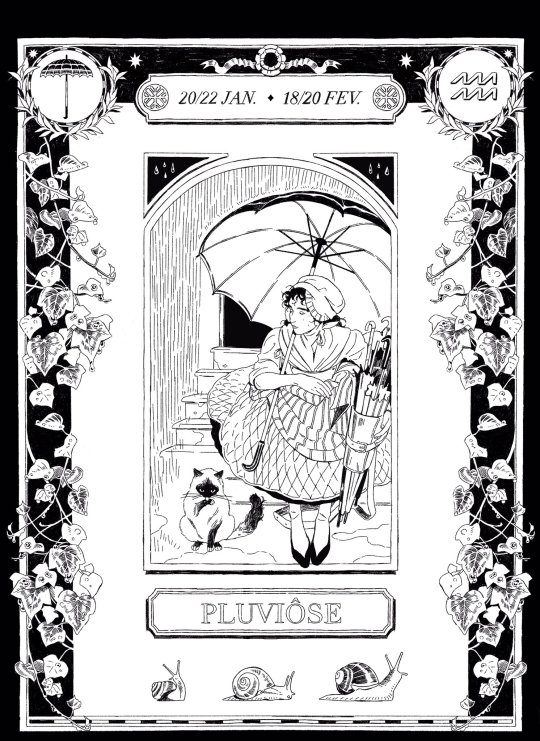
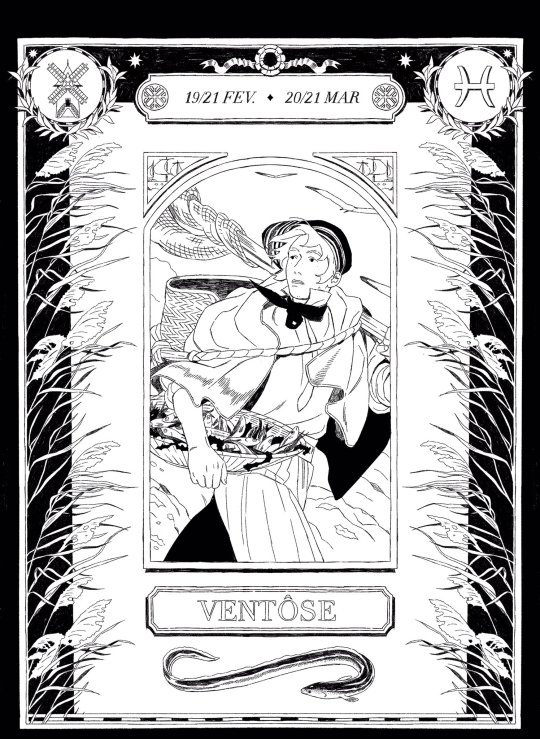
The months of winter of the Republican calendar : Nivôse (the month of Snows), Pluviôse (the month of Rains) and Ventôse (the month of Winds) !
3K notes
·
View notes
Photo

Ventôse Vacations - Submitted by SeesawSiya
#e5e4d9 #f7c507 #0f5d6b #6b5c96 #a16996 #d0afc6
545 notes
·
View notes
Text
Saint-Just Resources
A culmination of the many articles and other resources I use in my own research as someone studying to be a historian on the revolution. Will be added to as I progress in my research; please let me know if any links don't work!
Historians on Saint-Just:
Biography from Association pour la sauvegarde de la Maison de Saint-Just
Histoire de Saint-Just député à la Convention nationale (Hamel, 1860)
Lenôtre on SJ's 1791-early 1792 life in rural France
Saint-Just (Cioti, 1991)
Saint-Just: Sohn, Denker und Protagonist der Revolution (Monar, 1993)
Saint-Just (Gignoux, 1947)
Saint-Just en mission la naissance d'un myth (J.P. Gross, 1967)
Saint-Just et les femmes (Quennedey, 2016)
Saint-Just: Apostle of the Terror by Geoffrey Bruun (my personal favorite English SJ bio)
The Man of Virtue: The Role of Antiquity in the Political Trajectory of L.A. Saint-Just (Linton, 2010)
Saint-Just: The French Revolution's "Angel of Death" (Linton, 2015)
Three Letters of Saint-Just (Bruun, 1934)
Saint-Just in modern Annales historiography (Vinot, Linton, Quennedey, etc., 2017)
Saint-Just : Une Constitution pour la République (on his role in the drafting of the 1793 Constitution) (Crucifix and Quennedey, 2018)
Saint-Just's Pre-Convention Life:
Monograph on the Château de Coucy (first believed to have been written in the 1780s as a school assignment, debunked by Vinot) - see this blog post by Anne Quennedey for more info.
Arlequin-Diogene (SJ's play) -> I did an English translation
L’esprit de la révolution et de la constitution de la France (1791)
Convention Speeches:
All Convention Speeches Summarized (Anne Quennedey, 2020)
First Speech: 13 November 1792 on the debate of putting the King to trial.
19 vendémiaire an II (10 October 1793)
Ventôse Decrees Proposal Convention Speech (my complete English translation)
9 Thermidor an II (28 July 1794) Speech/Draft
My full English translation
"Praise the Victories and Forget Ourselves" Excerpt
"Tarpeian Rock" Analogy from 9 Thermidor Speech draft
Miscellaneous:
Why I study SJ
My Thoughts on SJ's Thoughts on the Terror
SJ's Last Paris Apartment ( w/ @/ vieillesmaisons)
SJ's various lodgings in Paris
Speech to Army of the Rhine excerpt
Alsace Mission Map
Saint-Just on Marat
#saint just#french rev#french revolution#antoine saint just#frev resources#saint just resources#queue
144 notes
·
View notes
Text
Quartidi 24 Ventôse an CCXXXII
(mercredi 13 mars 2024 / Wenesday March 13th, 2024)
Texte en français et en anglais / text in french and english


Le calendrier républicain, adopté pendant la Révolution française, était une tentative de rompre avec le passé monarchique et catholique en instaurant un système de mesure du temps basé sur les valeurs républicaines et agricoles. Chaque jour du calendrier républicain était dédié à une plante, un animal, un outil ou un événement symbolique, reflétant ainsi les idéaux de la Révolution.
Le mois de Ventôse dans le calendrier républicain français, correspondant généralement à la période entre le 20 février et le 20 mars, symbolisait le début de la transition vers le printemps. Associé au vent, ce mois était marqué par les premiers signes de renouveau et d'activités agricoles, préparant le terrain pour la saison à venir.
Le 24 Ventôse était une journée consacrée à la pâquerette, une humble fleur des prés qui symbolise la pureté, l'innocence et le renouveau de la nature.
La pâquerette, aussi connue sous le nom de "pâquerette vivace" ou "Bellis perennis", est une petite fleur blanche avec un cœur jaune vif. Elle est souvent associée au printemps et à la renaissance de la nature après les rigueurs de l'hiver. Dans de nombreuses cultures, elle est également un symbole d'amour et d'amitié.
La Journée du 24 Ventôse était l'occasion de célébrer la beauté simple et la résilience de la nature, ainsi que les valeurs de pureté et d'innocence qu'elle incarne. C'était aussi un rappel du cycle éternel de la vie, avec le printemps qui succède à l'hiver et apporte avec lui l'espoir et la promesse de jours meilleurs.
Pour commémorer cette journée, les républicains pouvaient organiser des activités en plein air, telles que des promenades dans la nature pour admirer les premières fleurs du printemps, y compris les pâquerettes. Ils pouvaient également organiser des fêtes communautaires où la pâquerette serait utilisée comme décoration ou offerte en signe d'amitié et de camaraderie.
En conclusion, la Journée du 24 Ventôse dans le calendrier républicain était une occasion de célébrer la beauté de la nature à travers la humble pâquerette, tout en rappelant les valeurs de pureté, d'innocence et de renouveau qu'elle représente.
***
The Republican calendar, adopted during the French Revolution, was an attempt to break away from the monarchic and Catholic past by establishing a time measurement system based on republican and agricultural values. Each day of the Republican calendar was dedicated to a plant, an animal, a tool, or a symbolic event, thus reflecting the ideals of the Revolution.
The month of Ventôse in the French Republican calendar, generally corresponding to the period between February 20 and March 20, symbolized the beginning of the transition to spring. Associated with the wind, this month was marked by the first signs of renewal and agricultural activities, preparing the ground for the upcoming season.
The 24th Ventôse was dedicated to the daisy, a humble flower of the meadows symbolizing purity, innocence, and the renewal of nature.
The daisy, also known as the "common daisy" or "Bellis perennis," is a small white flower with a bright yellow center. It is often associated with spring and the rebirth of nature after the rigors of winter. In many cultures, it is also a symbol of love and friendship.
The 24th Ventôse was an opportunity to celebrate the simple beauty and resilience of nature, as well as the values of purity and innocence it embodies. It was also a reminder of the eternal cycle of life, with spring following winter and bringing with it hope and the promise of better days.
To commemorate this day, republicans could organize outdoor activities such as nature walks to admire the first flowers of spring, including daisies. They could also organize community parties where the daisy would be used as decoration or offered as a sign of friendship and camaraderie.
In conclusion, the 24th Ventôse in the Republican calendar was an opportunity to celebrate the beauty of nature through the humble daisy, while also recalling the values of purity, innocence, and renewal it represents.
#calendrier#calendrier républicain#calendrier républicain français#calendrier révolutionnaire#calendrier révolutionnaire français#france#français#révolution#ventôse#plante#fleurs#nature#agriculture#french calendar#french#french revolution#french republic
4 notes
·
View notes
Text
Analysis of the French Revolution film by Robert Enrico and Richard T. Heffron
One of the (many) problems with films about the French Revolution is that in 1989, anyone wanting to make films about this period was required to adhere to the government's line, which dictated that the revolution could only be portrayed as leading to horrors, under threat of censorship. We can see this in the struggles Hervé Pernot faced. Even during de Gaulle's time, filmmakers who tried to make films as honest as possible about the revolution faced obstacles. Thus, there are inevitably significant historical inaccuracies in these films. Ironically, the leader of the country at the time of this cinematography, Mitterrand, who endorsed such thinking, had guillotined many Algerian revolutionaries, including some who never intended to harm anyone, like Fernand Iveton, or Algerians who were falsely accused. He endorsed parody trials of Algerians, far more significant and flagrant than those of 1794 regarding the Hebertists, Enraged, and Indulgents, when he was Minister of Justice in 1957, solely to please colonialist lobbying and secure a good political position. Therefore, he has no moral ground to lecture the Montagnards, who only abandoned their restraint once France's position was untenable both internally and externally. Most of them, along with other non-Montagnard members, courageously sided with the colonized.
I'll try to avoid delving too much into the absurd black legends unless it's unavoidable, such as when the film seems to endorse Brissot's statement that the "Revolutionary Tribunal is the Spanish Inquisition a hundred times worse." I know the Revolutionary Tribunal committed unforgivable acts in some of its parodies of justice, but the stupidity of this statement speaks for itself.
In the film, the "good guys" are Danton, Lafayette, and Mirabeau. It doesn't matter that they were all corrupt to the core, although Danton should not necessarily be lumped in with Mirabeau, as Danton may have accepted bribes but didn't necessarily fulfill his end of the bargain, and Lafayette, in my opinion, demonstrated more bloodthirstiness. Marat is depicted merely as a madman instead of showing that he was a man ahead of his time, an honest revolutionnary and brillant, sometimes , used inappropriate language due to the injustices he and the people faced. There's an interesting parallel here with the Algerian revolutionary Abane Ramdane, who shares many similarities on these points for me. Instead, we attribute this talent to Danton and potentially Desmoulins.
In the film, the French revolutionaries are portrayed as defeated, but victory is ultimately achieved, solely credited to Danton, which is false, reductionist, and even insulting to all revolutions. If revolutions succeed, it's certainly partly due to intellectual leaders, including figures like Saint Just, Le Bas, Lindet, Charlier, Billaud Varennes, Robespierre, and Hanriot, but it's primarily thanks to the people who supported them—the soldiers who held the line, the sans-culottes who persuaded the Convention to enact or repeal certain laws necessary to sustain the revolution, and the people who endured necessary but harsh taxes, who gave their shoes, sheltered revolutionaries—something most revolutionaries acknowledge.
The film reduces the Hebertists, Enrages, and Cordeliers to madmen united behind Hebert, portraying them without charisma, failing to show why they were popular, and omitting the split between Chaumette and the rest because Chaumette refused to join the insurrection against the Mountain after the Ventôse law.
On the other hand, during Danton's trial, the indulgents are cheered by the people. I know Danton delivered excellent speeches during his trial, but so did other factions, and there's no evidence of this particular scene. I've already discussed the differential treatment between indulgents, Hebertists, and Cordeliers in one of my previous posts. Apart from Hebert, virtually all Hebertists were executed with great dignity.
Marie Antoinette, to better exonerate Louis XVI, is portrayed as helpless during the trial, appearing scared before the scaffold. In reality, she showed courage and dignity that even her adversaries admired, which isn't depicted because she might come across better than Danton.
The Girondins sing the Marseillaise as they mount the scaffold. Regardless of whether one likes them or not, they showed great courage, which isn't shown because they might come across better than Danton on the scaffold.
Lucile Desmoulins and Marie Françoise Goupil, along with Chaumette, Gobel, and others, die with great dignity, but this isn't shown either. For Danton glorification the is the only except Louis XVI to face his death in dignity.
Robespierre is depicted as a coward fleeing his arrest with Saint Just and Couthon, whereas in reality, the gendarmes didn't want to arrest him, and he willingly offered his hands for arrest. The uprising of 17 out of 49 communes was spontaneous, but most revolutionaries hesitated because they didn't know whether to remain lawful or not, resulting in their losses (a Napoleon would have fewer scruples than them and for the wrong reasons) . Again because it will make them better than Danton ( let' s not talk about the glorification of Barras in this scene).
Morality: Only corrupt men act. The most selfless are depicted as grave fanatics who will execute you. It's no wonder the government approves of such films promoting these messages.
Not to mention the women erased from the revolutionary period—Manon Roland, Lucile Desmoulins portrayed as gentle without the political acumen of the real Lucile Desmoulins. Similarly tratment for Simone. Evrard Eleonore Duplay is depicted as personality-less fanatic , far from the real Eleonore Duplay. Louis Reine Audu, Pauline Léon, Olympe de Gouges, Marie Anne Babeuf, Albertine Marat, Charlotte Robespierre, and Elisabeth Le Bas, among many others, will not be shown.
I might write a second part soon if I have the time or in one month for a better analysis of the characters.
32 notes
·
View notes
Text

Second part of a two page letter written by Charlotte Robespierre on March 14 1795 to the Committee of General Security.
Paris, 24 ventôse III
To the citizen representatives composing the Committee of General Security
The fate that for a long time has been pursuing me appears to in this moment have made a new attempt to maximize my misfortune. The contagion of woe has spread to that which surrounds me and those who have shown me some interest are close to becoming its victims. One has assured me that citizen Mathon, commissioner of transports, has been denounced as having been a friend of my brothers,* and I have no doubt that, whatever the pretext of this denunciation, I am the real cause of it for having accepted an asylum at his house since a few months back. […] I should trust in your wisdom not to believe that you could ever accept a denunciation without the proof of the facts being obvious. But alas, calumny is so active, so ingenious in forging its appearances; innocence has been its victim so many times and I am so unhappy that I must suspect even the most unnatural of events.
I will not undertake the apology of Citizen Mathon. I will only tell you that, forced to leave my brothers, unjustly irritated against me, he had the courage to offer me an asylum with him in spite of their protests. He did not incite me into accepting it. I went to live with him when my misfortunes became greater and made me too burdensome to those who had first taken me in.
If I hadn't lost all my means of existence, I would never have exposed anyone and preferred to die rather than associate my friends with my disgrace. This is now what redoubles the horror of my situation. It is to get rid of this idea which overwhelms me that I conjure you citizens, in the name of humanity and justice, not to tolerate that those who have lavished on me the generous care of friendship are for that exposed to an unjust proscription. Seek further information on citizen Mathon and you will only find the purest patriotism and the virtues of a good man in his entire conduct.
Salut, fratérnité,
Robespierre.
*According to the article Charlotte Robespierre et ses amis (1961), ”Mathon had indeed been the object of a precise denunciation from a certain Godard, residing at 20 Rue de la Vielle Draperie, on 10 Thermidor, accusing him of having “accompanied this rascal of the great Lacroix on a mission to Brussels” as one of seven wagon administrators and to have been appointed to this position thanks to his childhood friend “Robespierre the older.” He also appears for transport and courier services on a list of patriots written by Robespierre and piublished by Courtois.” According to the same source, at the bottom of Charlotte’s letter is written: ”The Committee of General Security orders that she should be left alone, as should citizen Mathon with whom she is staying, who is known by several members” in the hand of Armand Joseph Guffroy.
#charlotte robespierre#robespierre#cute that the guy charlotte moved in and spent the rest of her life with was max’s childhood friend#maybe he reminded her of simpler times#I wish we knew more about him and his daughter anyway#armand joseph guffroy#charlotte the ultra loyal sister…
34 notes
·
View notes
Text
ÉMEUTES - « MAINTENANT IL FAUT RÉPONDRE PAR LA FORCE » (Tatiana Ventôse)
youtube
#une question d'importance#gallomancy#tatiana ventôse#un point de vue terriblement controversé mais indispensable pour une réflexion profonde#Youtube
3 notes
·
View notes
